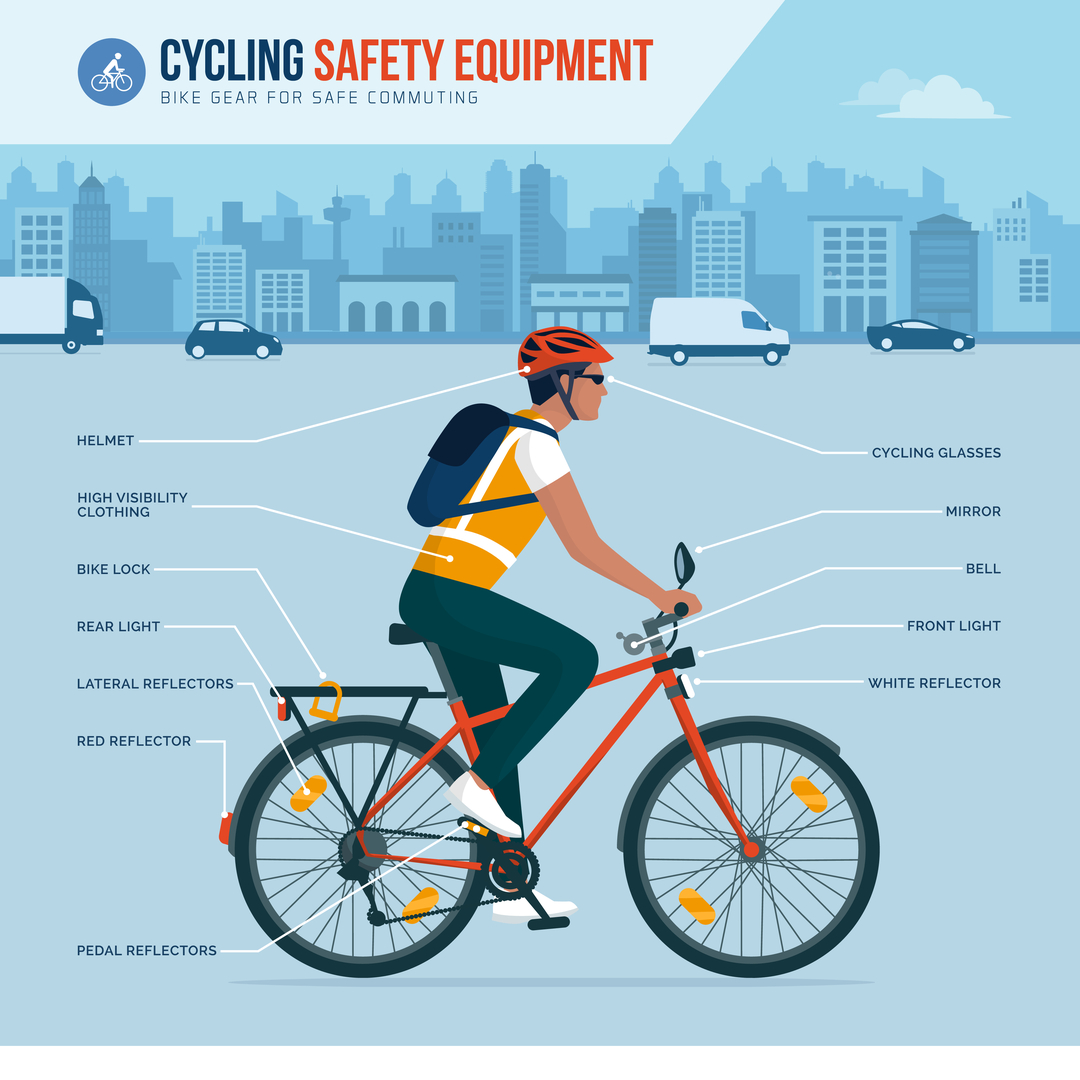Technology Making Cycling Safer

As cycling continues to get more popular, everyone is looking for new ways to make cycling safer and more enjoyable. New technologies continue to be developed that make cycling safer, encouraging more people to hop on their bikes.
Here are some of the technologies making cycling safer.
Bike Technology
With all the “smart” technology out there, it’s no surprise that “smart bikes” are entering the marketplace. There are also plenty of devices that attach to bikes to improve cyclist visibility and improve comfort, safety, and security for cyclists.
One such device is a projector that fits on handlebars and displays a bike symbol 6 feet ahead of the bike to warn motorists that a bike is approaching.
Some cyclists are adopting power assistance mechanisms that fit to the back of the bike. These devices boost cycling motion to make it easier to cycle in traffic. These devices can also sync up with smartphones to track cycling activity.
Road Technology
Advanced stop lines have been developed for traffic lights that give cyclists extra space and make them more visible. Specified cycling lanes are also effective at improving cycling safety as they mean cars and bikes can share the road without worrying about coming into contact with each other. Special bike lanes exist in some cities, too, such as the “Cycle Snake” of Copenhagen that connects the harbour bridge and highway.
There are proposals to introduce a similarly elevated cycle lane, dubbed “SkyCycle,” in London too. The plans are currently on hold due to a lack of available funds.
Technology in Other Vehicles
One manufacturer has developed a special bike helmet that warns users if they are in a vehicle’s blind spot, allowing them to avoid collisions. The helmet tracks the speed and location of a cyclist through smartphones. The information is shared with nearby Volvo vehicles fitted with the “City Safety” system to alert drivers to cyclists. Drivers are warned even if the cyclist is in their blind spot or visibility is low. The system can even take control of the car and apply the brakes if the car comes too close to cyclists. The car warns drivers about cyclists through the heads-up display while it alerts bikers about cars using a light on the helmet.
Another car manufacturer developed what they call “Bike Sense” technology. The technology warns drivers of nearby riders and pedestrians. If the driver tries to open the door in front of a cyclist, the handle will “buzz” to alert them. The accelerator pedal also vibrates if moving the car forward is likely to cause an accident.
Far too many cycling accidents involve heavy-goods vehicles (HGV). The number of HGV-related accidents is so high in London that Transport for London is introducing the Safer Lorry Scheme. This scheme will ban lorries from being on the road if they weigh over 3.5 tonnes and aren’t equipped with the proper mirrors and side guards.
Other Ways to Improve Cycling Safety
There are several campaigns aimed at improving biker safety, such as the “Think Bikes!” campaign by the AA. There are also proposals to include mandatory bike safety training as part of driving tests and covering bike safety in school curriculums. For now, pedestrians, cyclists, and drivers can all benefit by reading up about cycling safety.








